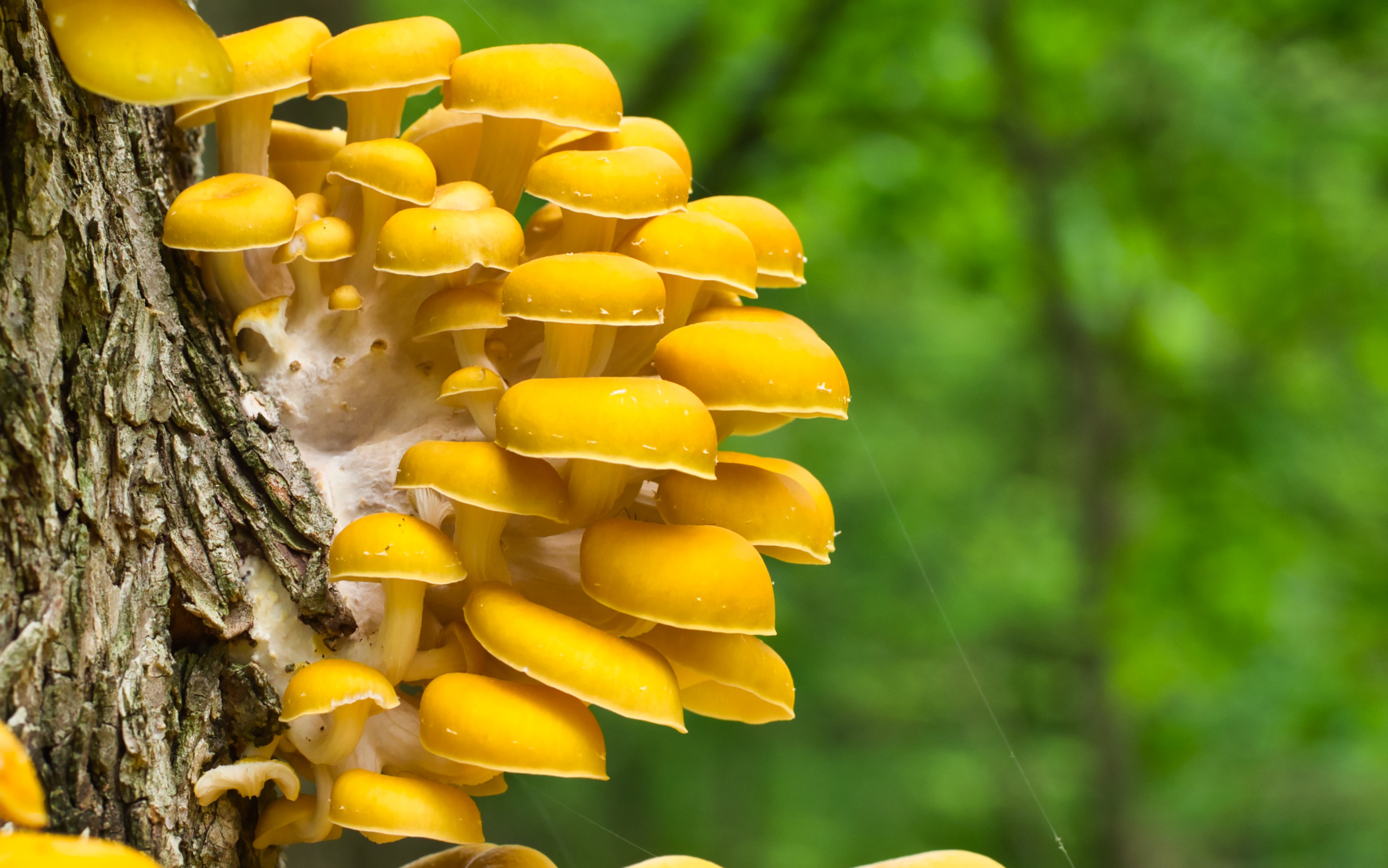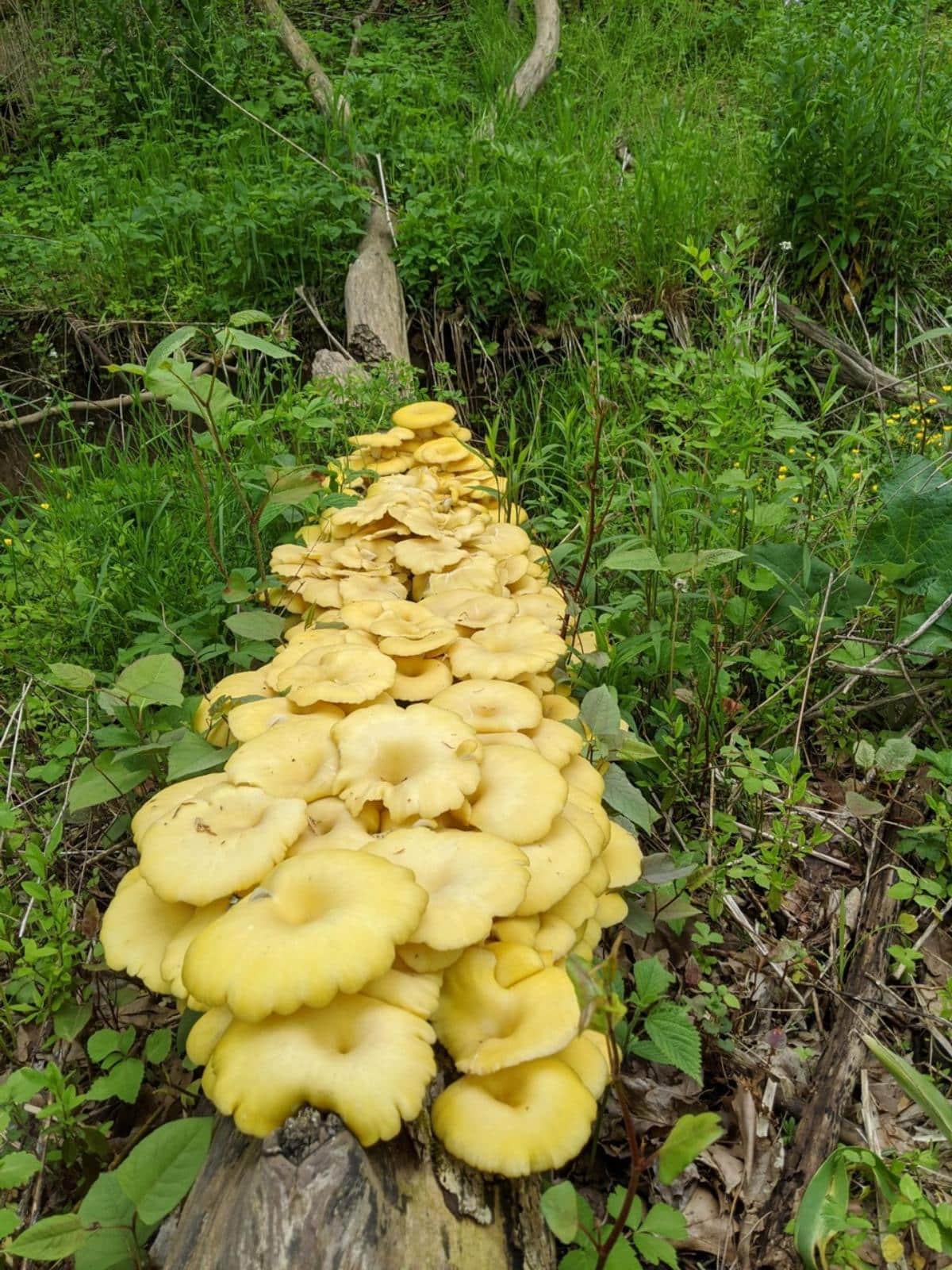Environment & Energy
Related: About this forumInvasive Golden Oyster Mushrooms Are Crowding Out Native Fungi and Could Slash Biodiversity in Forests, Study Suggests
Researchers found that trees in Wisconsin that had become hosts to the eye-catching species hosted only half the fungal biodiversity of trees that had not been invaded
Amber X. Chen - AAAS Mass Media Fellow
July 18, 2025

The population of golden oyster mushrooms has particularly exploded in the Midwest and Great Lakes region. Jordan Cook via Flickr under CC BY-NC 2.0
Native to Asia, golden oyster mushrooms are a charismatic species. Adored for their bright yellow color and umami flavor that’s popular in the culinary world, the mushrooms were first introduced to North America in the early 2000s.
Since then, however, their population has exploded, particularly around the Great Lakes region of the Midwest. Now, a new study published on Wednesday in the journal Current Biology reveals that these invasive mushrooms are crowding out and displacing native fungal species.
The new study also shines light on an overlooked aspect of conservation biology: the fact that fungi, like plants and animals, can also take on an invasive nature and proliferate, damaging ecosystems in their wake.
“People have a very strong sense that there is such a thing as an invasive plant—that concept is not controversial,” study co-author Anne Pringle, a mycologist at the University of Wisconsin–Madison, told Offrange’s Laura Reiley last year. “But as humans, we don’t have an equivalent sense that fungi can also have a biogeography, and because we don’t have that sense of the biodiversity of fungi, we have that perception that moving them around is not harmful.”
More:
https://www.smithsonianmag.com/smart-news/invasive-golden-oyster-mushrooms-are-crowding-out-native-fungi-and-could-slash-biodiversity-in-forests-study-suggests-180987003/
~ ~ ~
Yellow Oyster Mushrooms: Identification, Foraging, and Cooking
Published: Aug 1, 2022 · Modified: Apr 18, 2023 by Jenny
Stumbling across a bunch of yellow oyster mushrooms is almost as good as finding that pot of gold at the end of the rainbow. Yellow oyster mushrooms (Pleurotus citrinopileatus) fruit in huge clumps, sometimes covering entire trees – it is a sight to behold and will have you eating well for weeks. To add to the joy, yellow oysters are very easy to identify out in the wild, so they’re great for even the most inexperienced mushroom hunter.

Yellow oyster mushrooms
Pot of gold or honey pot of yellow oyster mushooms, hmm which is better??
Pleurotus citrinopileatus By MycoMuse on Mushroom Observer
The History and Origin of Yellow Oyster Mushrooms
Also known as golden oysters, yellow oyster mushrooms are not native to North America. This mushroom species grows naturally in Japan, northern China, and eastern Russia. In those countries, they are highly regarded as a wild edible mushroom and potential medicinal powerhouse.
Due to their popularity, they became an easy choice for mushroom cultivators to grow. But, they didn’t become a common choice for North American growers until the 2000s. Mushroom growers discovered a market for them in farmer’s markets and specialty grocers. These growers usually cultivated them outdoors on logs.
North American mushroom producers grew tons of yellow oysters for markets around the country. And they also sold grow-at-home kits because they’re such a beautiful and easy mushroom for the home grower.
No one knows precisely when the mushroom escaped cultivation and hopped into the wild, but the first recorded sightings happened in 2014. This was approximately ten years after they were first cultivated in North America.
More:
https://www.mushroom-appreciation.com/yellow-oyster-mushrooms.html